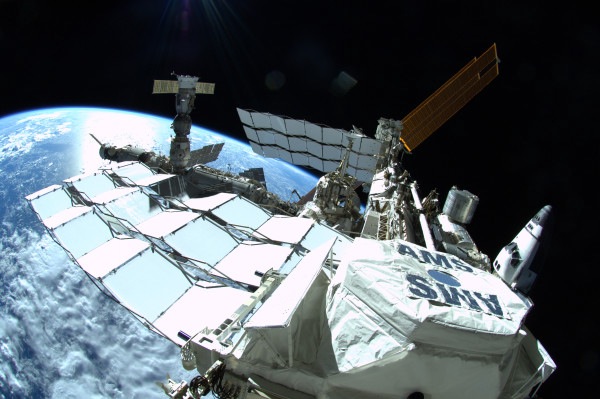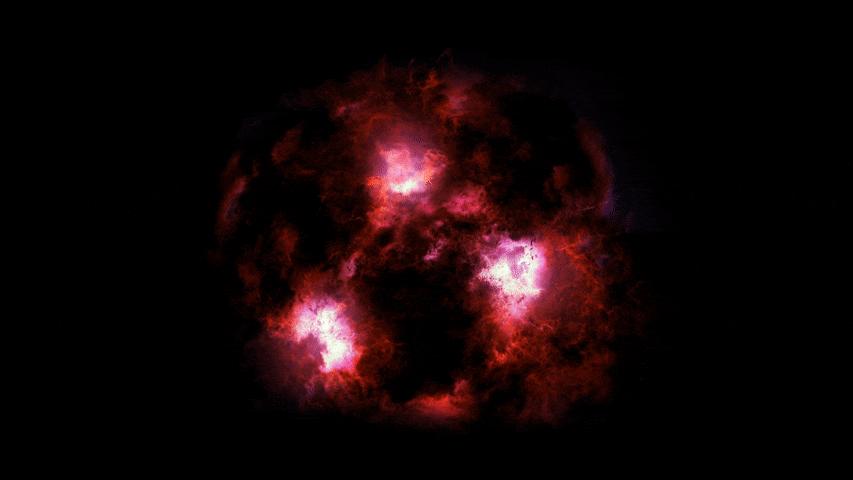When you buy through links on our site , we may realise an affiliate commission . Here ’s how it bring .
In the inhuman wild of quad , beetleweed huddle together together around the campfires of whizz and the assuring pull of supermassiveblack maw . Between these snug clusters of Galax urceolata , where empty place stretch on for millions of light - yr all around , a faint highway of gas bridges the darkness .
This colicky , intergalactic internet is have it off in cosmological good example as the cosmic World Wide Web . Made of long filaments of H left over fromthe Big Bang , the internet is think to hold most ( more than 60 % ) of the gaseous state in the universe and to directly feast all of the star - acquire regions in distance . At the crossing where filament overlap , galaxies appear . At least , that ’s the possibility .

A massive galaxy cluster from the C-EAGLE simulation, providing a view of a region comparable to the one where the filaments have been detected. The color map represents the same emission from the gas filaments as the one detected in observations. At the convergence of these filaments, a massive cluster of galaxies are assembling
The filaments of the astronomical web have never been directly observed before , because they are among the faintest bodily structure in the universe and are easy overshadowed by the luminescence of the wandflower around them . But now , in a study publish today ( Oct. 3 ) in the journalScience , researchers have cobble together the first - ever photograph of cosmic filament converging on a faraway wandflower bunch , thanks to some of the most sore scope on Earth .
The image ( below ) shows down in the mouth filaments ofhydrogencrisscrossing through a cluster of ancient lily-white galax , located about 12 billion scant - class aside from Earth ( meaning the coltsfoot were born in roughly the first billion and a half years after the Big Bang ) . Gently lit by theultravioletglow of the galaxies themselves , the filament stretch on for more than 3 million loose - years , corroborate their condition as some of the most gargantuan structures in outer space .
" These observations of the faintest , magnanimous structures in the macrocosm are a cay to understanding how our creation evolved through time , " Erika Hamden , an astronomer at the University of Arizona ’s Steward Observatory , wrote in an accompanying commentaryon the new study . ( Hamden was not involved in the research . ) These observations , Hamden add together , are " just the tip of the iceberg lettuce " of cosmic web detection , with enquiry revealing further images of the web in other ancient corner of space .

Behold the cosmic web. This map shows gas filaments (blue) running from the top to the bottom of the image, linking galaxies in an ancient cluster 12 billion light-years away. The white dots embedded within these filaments are active star forming galaxies, which are being fed by the filaments.
Connecting to the web
As the new field notes , the wisp of atomic number 1 that make up the cosmic web ’s filaments are so feeble they are barely distinguishable from the empty sky . So , how did the researchers manage to coax these features out of the dark ? By using the galax within the web " as cosmic torch , " Hamden write .
Using an instrument called the Multi Unit Spectroscopic Explorer on the European Southern Observatory ’s Very Large Telescope , the researchers zoomed in on an ancient cluster of galaxies locate in the Aquarius constellation , know for being both extremely huge and extremely erstwhile . Light from newborn adept and matter - shred black hole faintly crystallize the wisps of atomic number 1 swirling in and between these galaxy , countenance the research worker to map a vague outline of the cosmic web ’s filaments there .
The watching revealed two parallel highways of atomic number 1 unite the astronomic dots over millions oflight - years , bridged by a third stream of gas connecting them diagonally like a cosmic off - ramp . True to cosmological models , the filament of gas seemed to at once feed the most fighting star - constitute galaxies on the grid , pump hydrogen right into the homes of newborn sun and thirsty bootleg holes .

Need more space?You can get 5 issues of our partner “All About Space” Magazine for $5for the latest amazing news from the final frontier!
This field of study provides the most convincing evidence yet that the cosmic web exists , just as models predict , Hamden write . However , the survey of structure so feeble and far away has obvious limitations . For one , it ’s almost impossible to tell where the boundary of each H filament end and empty place begins , which enables different researchers to define the bound of filament differently , potentially resulting in different pictures of the structures . In addition , ground - based scope can detect filament from only the most distant , ancient Galax urceolata clusters , which give out enough Christ Within to reveal how the cosmic WWW appeared shortly after the Big Bang .
A space - based UV telescope could start the doorway to studying how the vane connects to younger , fainter galaxies , but deploy such an instrument would be difficult and expensive , Hamden wrote . in the end , this unexampled subject field does n’t put the stargazers of Earth any nigher to the ancient and mystical world across the creation — but it does remind us that we may be more connected to them than we retrieve .
Originally print onLive Science .


















